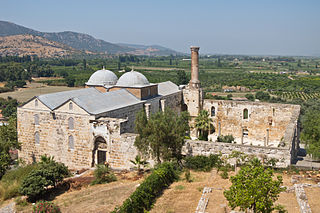
The İsa Bey Mosque, constructed in 1374–75, is one of the oldest and most impressive works of architectural art remaining from the Anatolian beyliks. The mosque is situated on the outskirts of the Ayasluğ Hills at Selçuk, İzmir.

The Green Mosque, also known as the Mosque of Mehmed I, is a part of a larger complex on the east side of Bursa, Turkey, the former capital of the Ottoman Turks before they captured Constantinople in 1453. The complex consists of a mosque, türbe, madrasah, kitchen and bath. The name Green Mosque comes from its green and blue interior tile decorations.

The Alâeddin Mosque is the principal monument on Alaaddin Hill in the centre of Konya, Turkey. Part of the hilltop citadel complex that contained the Seljuk Palace, it served as the main prayer hall for the Seljuk Sultans of Rum and its courtyard contains the burial places of several of the sultans. It was constructed in stages between the mid-12th and mid-13th centuries. It is the largest of several Seljuk mosques to survive in Konya.
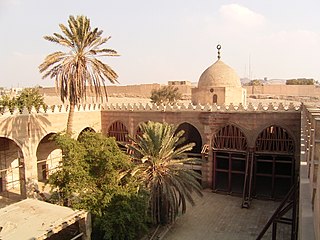
The Aqsunqur Mosque (Arabic: مسجد آق, Turkish: Aksungur Camii; also known as the Blue Mosque or the Mosque of Ibrahim Agha is located in Cairo, Egypt and is one of several "blue mosques" in the world. It is situated in the Tabbana Quarter in Islamic Cairo, between Bab Zuweila and the Citadel of Cairo. The Aqsunqur Mosque also serves as a funerary complex, containing the mausoleums of its founder Shams ad-Din Aqsunqur, his sons, a number of children of the Bahri Mamluk sultan an-Nasir Muhammad and that of its principal restorer, Ibrahim Agha al-Mustahfizan.
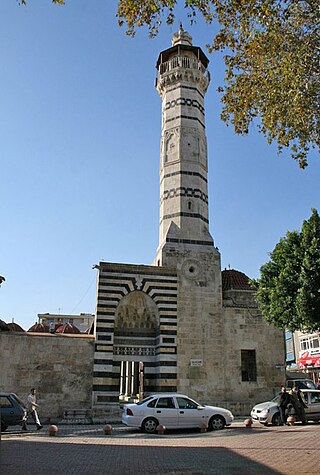
Ulu Cami, is a 16th-century mosque in Adana, Turkey. It forms part of a complex (külliye) that includes a madrasah and a mausoleum (türbe). The buildings are on Kızılay street, next to the Ramazanoğlu Hall.
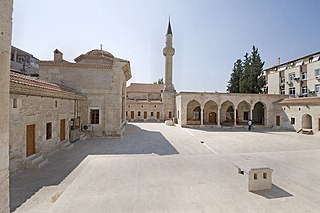
Yağ Cami is a historical mosque located in the old town of Adana, Turkey. The structure was originally built as the Surp Hagop Armenian Apostolic Church at the second half of the 13th century during the Armenian Kingdom of Cilicia. It was converted into a mosque in c.1380 by the Ramazanoğlu Bey Şihabeddin Ahmed, just after taking over the city. It is the oldest mosque in the city and later on formed part of the külliye that also includes a madrasah.

The Grand Mosque of Bursa is a historic mosque in Bursa, Turkey. It was commissioned by the Ottoman Sultan Bayezid I to commemorate his great victory at the Battle of Nicopolis and built between 1396 and 1399. The mosque is a major monument of early Ottoman architecture and one of the most important mosques in the city, located in the heart of the old city alongside its historic markets.
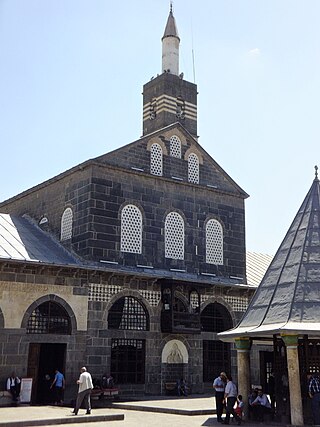
The Great Mosque of Diyarbakır was built by the Seljuk Sultan Malik-Shah I over an older mosque, and is considered by Muslim scholars to be the fifth holiest site in Islam after the Great Mosque of Damascus, which it is stylised after. It can accommodate up to 5,000 worshippers and hosts four different Islamic traditions.

Seljuk architecture comprises the building traditions that developed under the Seljuk dynasty, when it ruled most of the Middle East and Anatolia during the 11th to 13th centuries. The Great Seljuk Empire contributed significantly to the architecture of Iran and surrounding regions, introducing innovations such as the symmetrical four-iwan layout and the first widespread creation of state-sponsored madrasas. Their buildings were generally constructed in brick, with decoration created using brickwork, tiles, and carved stucco.

The Sultan Murad Mosque is an Ottoman-era mosque in Skopje, North Macedonia. It was built in the 15th century on top of the Monastery of Saint George which was destroyed when Ottoman commander Pasha Yiğit Bey captured Skopje from Vuk Branković in 1392.

Eşrefoğlu Mosque is a 13th-century mosque in Beyşehir, Konya Province, Turkey It is situated 100 metres (330 ft) north of the Beyşehir Lake

The Çelebi Sultan Mehmed Mosque, also known as the Bayezid Mosque and the Great Mosque, is an early 15th-century Ottoman mosque in Didymoteicho, East Macedonia and Thrace, in the far northeast of Greece.
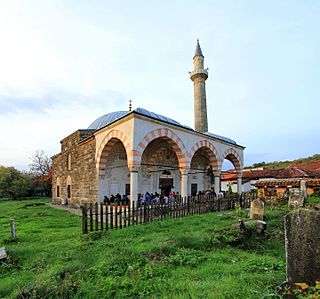
The Hadum Mosque in Gjakova, Kosovo was built in the last decade of the 16th century (1594/95) and was financed by Hadum Sylejman Efendia – Hadum Aga, which explains the name of the mosque. The mosque was built on the property of Jakë Vula and is located in the Old Bazaar. A rectangular, dome-covered structure, it belongs to the classic forms of mosque of the Islamic-Kosovar style. Around the mosque there are tombs with sculpted decorations and engraved with epithets in the old Ottoman language. The tombs belonged to the most respected families in Gjakova. There also used to be a "hamam", but it was destroyed during World War II. The entrances are covered with floral paintings, geometrical shapes, citations from the Kur'an and arabesques. In 1999, the surrounding complex was burned to the ground and only the mosque and the minaret along with some damaged arabesques survived.
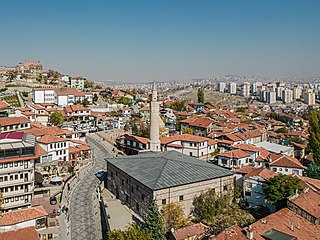
Aslanhane Mosque is a 13th-century mosque in Ankara, Turkey.

Mahmutbey Mosque is a historical mosque in Kasaba village in Kastamonu Province, Turkey.
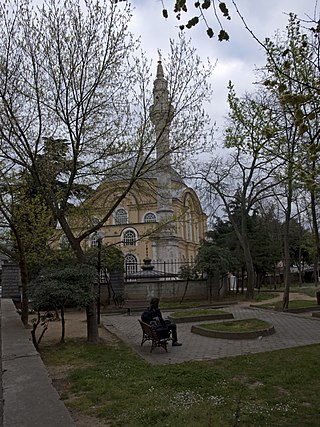
Altunizade Mosque, also known as İsmail Zühtü Pasha Mosque is a 19th-century Ottoman mosque located in Istanbul, Turkey.

The Great Mosque of Sfax was the most important mosque in the old city of Sfax, Tunisia. It was initially built towards the mid-9th century under the rule of the Aghlabid dynasty, a vassal state of the Abbasid Caliphate. The mosque was the urban and religious heart of the city and it underwent several major modifications in later periods. Architecturally, it is notable for its minaret and its unusually decorated eastern façade.

Sivrihisar Grand Mosque is a historical mosque in Sivrihisar, Turkey.

Grand Mosque of Erzurum is an historic mosque in Erzurum, Turkey. It is also called "Atabey Mosque" because the Saltukids were referred to as the “Atabey”.

The Iplikçi Mosque, also known as Ebülfazl Mosque, is a 13th-century Seljuk-era Islamic Friday mosque built in 1201-2 AD in the city of Konya, Turkey, to the east of Alaeddin Hill.






























